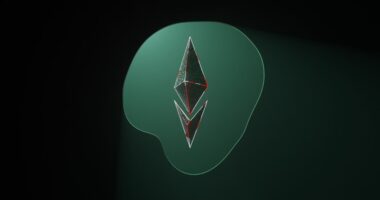Non-fungible tokens (NFTs) are digital assets that represent ownership or authenticity of unique items or content using blockchain technology. Unlike fungible cryptocurrencies such as Bitcoin or Ethereum, NFTs are non-interchangeable, with each token being unique. This uniqueness contributes to their value and has sparked significant interest and investment in the NFT market.
NFTs can represent various digital and physical assets, including artwork, music, videos, virtual real estate, and collectibles. They are stored on a blockchain, which is a decentralized, transparent digital ledger recording transactions across a computer network. This storage method ensures verifiable ownership and provenance while preventing duplication or tampering.
Blockchain technology also enables the creation of smart contracts, which can automatically execute specific agreement terms when predetermined conditions are met, such as transferring NFT ownership upon payment.
Key Takeaways
- NFTs are unique digital assets that represent ownership or proof of authenticity of a specific item or piece of content.
- NFTs work by using blockchain technology to create a digital certificate of ownership that cannot be duplicated or forged.
- NFTs have a wide range of uses, including digital art, collectibles, virtual real estate, and even tokenizing physical assets.
- NFTs have disrupted the art world by providing new opportunities for artists to monetize their work and creating a more accessible and transparent art market.
- Investing in NFTs can be lucrative, but it also comes with risks such as market volatility and potential legal issues.
How do NFTs work?
NFTs are unique digital tokens that represent ownership or proof of authenticity of a specific item or piece of content. They are created using blockchain technology, which assigns a unique identifier and metadata to each token. This metadata provides information about the asset, such as its creator, title, description, and other relevant details.
Storage and Trading
The NFT is then stored on a blockchain, where it can be bought, sold, and traded like any other digital asset. This allows for a secure and transparent way to transfer ownership of the asset.
Proving Ownership and Provenance
One of the key features of NFTs is their ability to prove ownership and provenance of digital assets. This is achieved through the use of cryptographic signatures and timestamps on the blockchain, which provide a secure and transparent record of the asset’s history.
Verifying Authenticity
When an NFT is transferred from one owner to another, the transaction is recorded on the blockchain, providing a clear and irrefutable record of the transfer of ownership. This makes it easy for buyers to verify the authenticity and ownership of an NFT before making a purchase.
The uses of NFTs

NFTs have a wide range of uses across various industries, including art, music, gaming, collectibles, and more. In the art world, NFTs have revolutionized the way digital art is bought and sold, allowing artists to tokenize their work and sell it directly to collectors without the need for intermediaries such as galleries or auction houses. This has opened up new opportunities for artists to monetize their work and reach a global audience of collectors.
In the music industry, NFTs have been used to sell exclusive rights to songs, albums, and other music-related content. This has allowed musicians to connect with their fans in new ways and create unique and valuable experiences for their most dedicated supporters. NFTs have also been used in gaming to create rare and collectible in-game items that can be bought, sold, and traded on the blockchain, adding a new layer of value and scarcity to virtual goods.
Outside of the creative industries, NFTs have also been used to tokenize real-world assets such as real estate, luxury goods, and even intellectual property rights. This has the potential to revolutionize the way these assets are bought and sold, making it easier for investors to access new markets and for owners to unlock the value of their assets.
The impact of NFTs on the art world
NFTs have had a profound impact on the art world, providing artists with new opportunities to monetize their work and reach a global audience of collectors. By tokenizing their art as NFTs, artists can sell their work directly to collectors on digital marketplaces, bypassing traditional intermediaries such as galleries or auction houses. This has democratized the art market and allowed artists to retain more control over the sale of their work.
NFTs have also introduced new ways for artists to engage with their audience and create unique experiences for their collectors. For example, some artists have used NFTs to sell exclusive rights to digital art pieces, allowing collectors to access special perks such as limited edition prints or behind-the-scenes content. This has created a new level of interaction between artists and collectors, leading to a more personalized and intimate connection between the two parties.
However, the rise of NFTs in the art world has also raised questions about the environmental impact of blockchain technology. The process of minting NFTs and recording transactions on the blockchain requires a significant amount of energy, leading to concerns about the carbon footprint of NFTs. As a result, some artists and collectors have expressed reservations about participating in the NFT market until more sustainable solutions can be found.
Investing in NFTs
Investing in NFTs has become increasingly popular as more people recognize the potential for value appreciation in this emerging market. NFTs have proven to be a lucrative investment for some early adopters, with certain digital artworks selling for millions of dollars at auction. The scarcity and uniqueness of NFTs make them attractive to collectors and investors who are looking for alternative assets with potential for high returns.
One of the key factors driving investment in NFTs is the ability to easily buy, sell, and trade these digital assets on various online marketplaces. This accessibility has made it possible for anyone with an internet connection to participate in the NFT market, democratizing access to investment opportunities that were previously only available to a select few. Additionally, the transparency and security provided by blockchain technology make it easier for investors to verify the authenticity and provenance of NFTs before making a purchase.
However, investing in NFTs also comes with its own set of risks and challenges. The volatility of the NFT market means that prices can fluctuate dramatically over short periods of time, leading to potential losses for investors who are not prepared for this level of risk. Additionally, the lack of regulation in the NFT market means that investors may be more susceptible to fraud or scams, making it important for individuals to conduct thorough research before making any investment decisions.
Potential risks and challenges of NFTs

While NFTs offer exciting opportunities for creators, collectors, and investors, there are also potential risks and challenges associated with this emerging market. One of the main concerns surrounding NFTs is the environmental impact of blockchain technology. The process of minting NFTs and recording transactions on the blockchain requires a significant amount of energy, leading to concerns about the carbon footprint of NFTs.
As a result, some artists and collectors have expressed reservations about participating in the NFT market until more sustainable solutions can be found. Another challenge facing the NFT market is the lack of regulation and oversight. The decentralized nature of blockchain technology means that there are fewer safeguards in place to protect investors from fraud or scams.
This has led to instances of copyright infringement, plagiarism, and other forms of intellectual property theft within the NFT space. Without clear guidelines and regulations in place, it can be difficult for individuals to navigate the legal complexities of buying, selling, and trading NFTs. Additionally, there is also a risk of market saturation as more creators and brands enter the NFT space in search of new revenue streams.
The influx of new NFTs could lead to oversaturation in certain markets, making it harder for individual creators to stand out and find buyers for their work. This could potentially devalue existing NFTs and make it more challenging for creators to monetize their art in the long run.
The future of NFTs
The future of NFTs is filled with potential for continued growth and innovation across various industries. As more creators and brands embrace this technology, we can expect to see new use cases for NFTs emerge in areas such as virtual real estate, event tickets, digital fashion, and more. This could lead to new opportunities for individuals to monetize their creativity and unlock value from previously untapped markets.
In addition to new use cases, we may also see advancements in blockchain technology that address some of the current challenges facing NFTs. For example, there is ongoing research into more sustainable methods for minting NFTs that reduce their environmental impact. Additionally, efforts are being made to establish clearer guidelines and regulations for the NFT market that protect both creators and investors from fraud or copyright infringement.
Overall, the future of NFTs holds promise for continued innovation and growth as this technology continues to reshape how we create, buy, sell, and collect digital assets. With ongoing advancements in blockchain technology and increasing interest from creators and investors alike, it is likely that we will see even more exciting developments in the world of NFTs in the years to come.
If you’re interested in learning more about the world of cryptocurrency and blockchain technology, you might want to check out this article on Ethereum News titled “Hello World: A Beginner’s Guide to Ethereum”. This article provides a comprehensive overview of Ethereum, the platform on which many NFTs are created and traded. Understanding the basics of Ethereum can help you better grasp the concept of non-fungible tokens and their uses.
FAQs
What is an NFT?
An NFT, or non-fungible token, is a digital asset that represents ownership or proof of authenticity of a unique item or piece of content, such as artwork, music, videos, or collectibles, using blockchain technology.
How do NFTs work?
NFTs work by using blockchain technology to create a digital certificate of ownership for a specific item or piece of content. This certificate is stored on a decentralized ledger, making it tamper-proof and providing a transparent record of ownership.
What makes NFTs different from cryptocurrencies like Bitcoin or Ethereum?
While cryptocurrencies like Bitcoin and Ethereum are fungible, meaning they can be exchanged on a one-to-one basis, NFTs are non-fungible, meaning each one is unique and cannot be exchanged on a like-for-like basis.
What are some common uses for NFTs?
Common uses for NFTs include buying and selling digital artwork, music, videos, and collectibles, as well as proving ownership and authenticity of digital assets.
How are NFTs bought and sold?
NFTs are bought and sold on online marketplaces that support blockchain technology, using cryptocurrency as the medium of exchange. Transactions are recorded on the blockchain, providing a transparent and immutable record of ownership.





